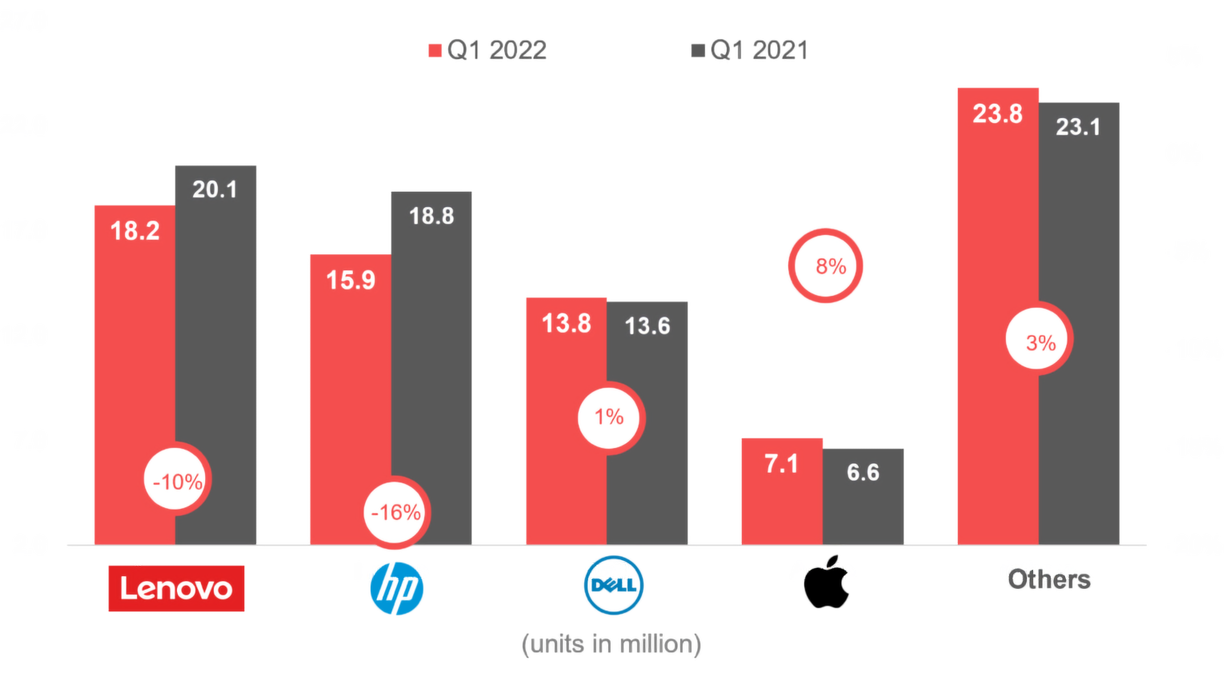In a nutshell: The last few years have been an anomaly for the PC industry. The pandemic forced millions of people to work from home, with many having to upgrade their computers or buy new machines to get the job done. The boom, along with ongoing Covid restrictions, led to supply chain issues and component shortages that have made it hard for people to buy certain electronic goods. Slowly but surely, things are starting to get back to normal.

Easing logistics issues and component shortages have helped manufacturers address backlogged orders, and many workers have since returned to the office.
As a result, things are moving more smoothly. According to Counterpoint's latest report, PC shipments dipped 4.3 percent year over year in Q2 2021 to reach 78.7 million units.

Lenovo retained its position as the top global vendor based on shipments with 18.2 million units shipped. That's down nearly 9.5 percent compared to the same period last year. HP captured the second spot with 15.9 million PCs shipped, a 15.4 percent year-over-year dip. Dell and Apple, which finished third and fourth, saw shipments increase by 1.5 percent and 7.6 percent, respectively.
You've probably noticed this normalization in other areas, too. Microsoft's Xbox Series is more accessible now than ever, and the system brought in more money than every other console last quarter. GPUs are also more available than they have been in recent memory, and are coming closer to MSRP, too.
Image credit Pixabay